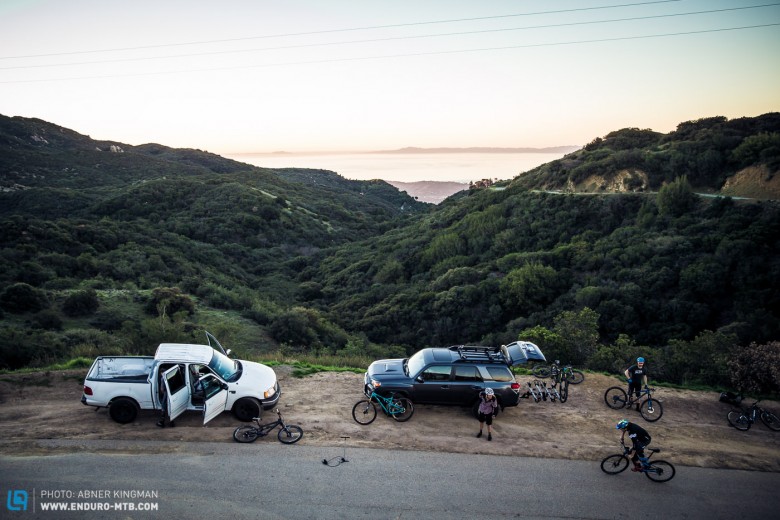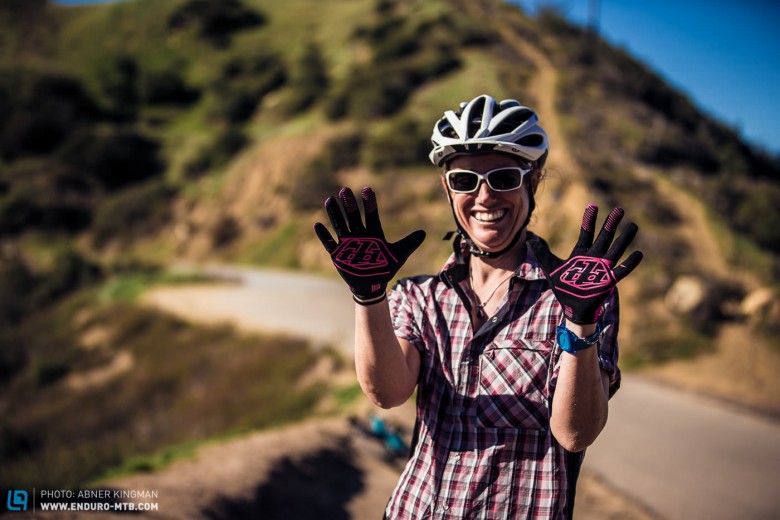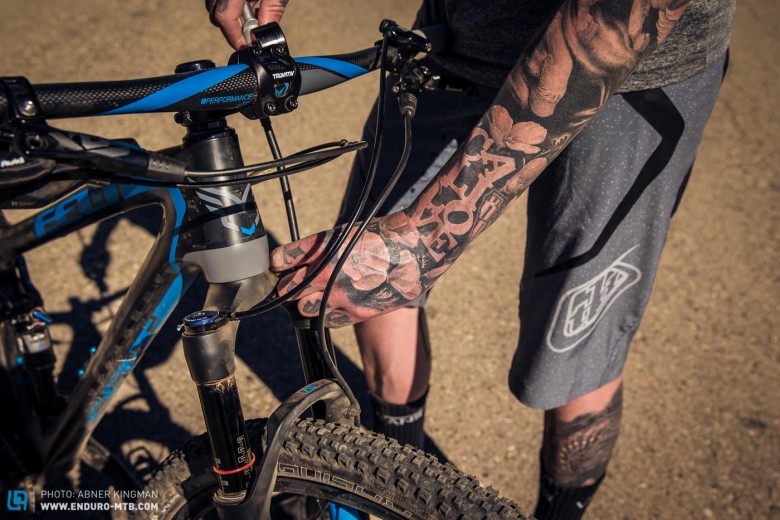Preview Issue #015 | New-School XC Bike Group Test

More than 10,000 readers took part in our 2014 reader survey — and we really took their feedback to heart. For issue #015, we tested eight fun bikes that are ideal for fast-paced rides on your home trails or even an occasional XC race.

A dose of realism: This Group Test is based on the notion that while most XC bikes sold globally are marketed as World Cup race machines, not that many of their owners actually ride them in such a way. Some bike manufacturers have already recognised this and are introducing trail versions of their XC race bikes. These are equipped with dropper seatposts, wider tyres and bars, and sometimes even with longer-travel suspension forks which slackens geometry. The focus is shifting from weight saving towards fun, confidence and more downhill performance — all the while retaining XC-style light-footedness, which is a win-win situation for many XC riders.
![[insert headline here]](https://enduro-mtb.com/wp-content/uploads/2015/02/AK_20150123AK1_19351-780x520.jpg)
XC World Cup racer and Olympian Manuel Fumic accurately observed during the Design & Innovation Award 2015 that the perception of a traditional XC rider is rapidly changing: “For many bikers, the term ‘cross country’ creates an image of lycra-clad hardtail-warriors who are only interested in their best times after speeding up climbs. Modern XC riders ride full-suss bikes and enjoy their descents just as much as climbing. They’re just looking for enjoyment on their bikes.”
A new type of test invitation:
For the first time, we didn’t request specific models from manufacturers. Instead we sent them a briefing on the general direction of the Group Test. They received information about the test track, price range, testing scenario and a recommendation for the travel range. The rest was left for them to decide. We wanted them to submit the model that in their eyes best fulfills the requirements of the test. For big manufacturers like Trek and Specialized, who have a wide range of price points within their product portfolio, this makes the decision tricky. The different wheel sizes also add to the problem of “over-choice.” In contrast to previous tests, small spec changes were also permitted in order to optimise the bikes for the test terrain. After all, traditional bicycle shops also mostly offer a similar, cost-free customising of some components when you buy a bike from them. Small changes can have a big effect.
We’re looking forward to your feedback on this new type of test invitation.
Now, back to business.
The test circuit:
In mid January, we set off to California in order to complete the test with a seven person test crew. The demanding coastal trails of Santa Barbara were the ideal terrain for the eight XC bikes to prove their stuff. Lap by lap the bikes had to hold their own climbing and on a 15-minute downhill which featured everything from full-flow corners to rough rock gardens. Those who say “that’s not cross country” should take a good look at the unforgiving terrain of a modern World Cup XC racecourse. A clear benefit of the demanding course was sorting the wheat from the chaff — big differences became quickly visible.


The Team:
Seven riders with widely differing backgrounds formed the US test team made up of five men and two ladies. ENDURO Chief US Editor and ex-racer Joe Parkin lead the team along with ENDURO founder Robin Schmitt, who travelled from Germany especially to take part in the multi-day testing process.
Riding Skills instructor Inga Beck and her partner Jason van Horn were as much a part of the test team as Abner Kingman and Santa Barbara local Jen See (XC-rider, freelance author and surfer), who didn’t just eagerly join the crew but also allowed us to take over her apartment for discussing the bikes over pizza and craft beers. Shop owner and racer Ty Hathaway rounded up the test crew, and ex-downhill World Cup pro Duncan Riffle was our local guide.



The test bikes:
The majority of the test bikes had suspension travel from 100 – 120 mm. Contrary to our expectations, fewer manufacturers than hoped fitted dropper posts. Maybe the added weight and price were the reasons — all too often bike purchasing decisions fixate on these parameters. [Editor’s note: Unfortunately, our Specialized Camber got lost in transit for several days, and didn’t arrive in time for the test.]
The test field: BMC Four Stroke FS02 | Cannondale Scalpel Carbon 2 | Felt Edict 1 | Giant Anthem Advanced SX 27.5 | Ibis Ripley | Marin Rift Zone 8 | Trek Fuel EX 9.8 27.5 | Yeti ASRc
Over the coming days we’ll give you a closer look at each of the individual bikes with First-Look articles. Stay tuned!

Text: Joe Parkin Photos: Abner Kingman
Did you enjoy this article? If so, we would be stoked if you decide to support us with a monthly contribution. By becoming a supporter of ENDURO, you will help secure a sustainable future for high-quality mountain bike journalism. Click here to learn more.








